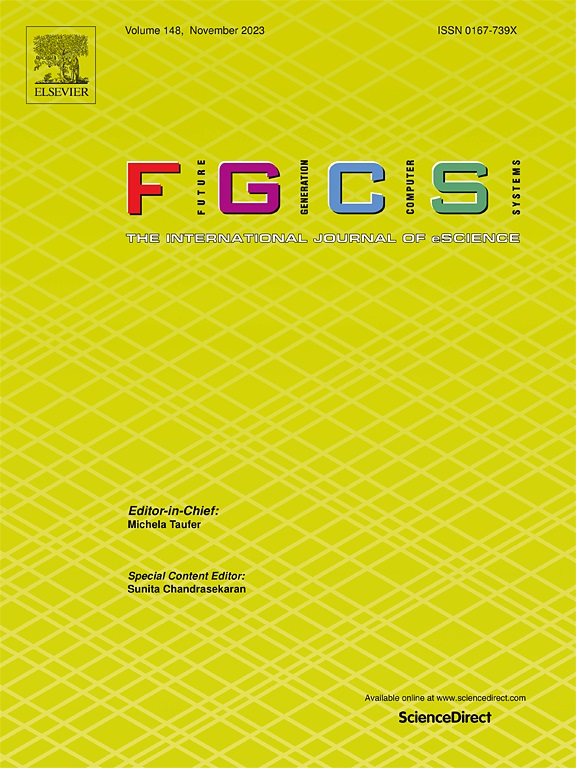一种基于特征校准和注意力融合的基于通道特征增强的物联网自蒸馏方法
IF 6.2
2区 计算机科学
Q1 COMPUTER SCIENCE, THEORY & METHODS
Future Generation Computer Systems-The International Journal of Escience
Pub Date : 2025-03-17
DOI:10.1016/j.future.2025.107816
引用次数: 0
摘要
随着物联网(IoT)的兴起,在边缘设备上使用卷积神经网络(cnn)进行图像任务已经变得普遍,但是为了获得更好的性能而增加的神经网络的大小和复杂性对于资源有限的嵌入式设备来说并不理想。引入了不需要预先训练的复杂模型的自蒸馏,在模型自身训练时利用知识蒸馏,从而提高了性能。然而,当前自蒸馏技术的模型精度和效率仍有待研究,以满足物联网场景的实际需求。为此,本文提出了一种基于信道特征增强(CBFE)的改进自蒸馏方法,该方法通过特征校准和注意力融合,在最小的额外负载下提高了网络性能。特别地,我们首先提出了一个基于通道的特征校准模块。该模块使用1x1卷积对神经网络输出特征图的通道维数进行降维和还原。对于每个输入特征图,生成一个新的特征图,然后将其与原始特征图进行元素相乘以增强表示。其次,我们引入了一个基于通道关注的特征融合网络分支,该分支提炼出更精确的特征表示,以更好地指导网络浅层的训练。实验结果表明,我们的方法超越了最先进的方法,在各种基准测试中表现出更高的性能和泛化。本文章由计算机程序翻译,如有差异,请以英文原文为准。
An accurate and efficient self-distillation method with channel-based feature enhancement via feature calibration and attention fusion for Internet of Things
With the rise of the Internet of Things (IoT), using convolutional neural networks (CNNs) for image tasks on edge devices has become prevalent, but the increased size and complexity of neural networks for better performance is not ideal for resource-limited embedded devices. Self-distillation, which does not need a pre-trained complex model, has been introduced to utilize knowledge distillation during the model’s own training, thus enhancing performance. However, the model accuracy and efficiency of current self-distillation techniques still need investigation to meet real-world demands in IoT scenarios. Therefore, this paper proposes an improved self-distillation with Channel-Based Feature Enhancement (CBFE) via feature calibration and attention fusion, which improves network performance with minimal extra load. In particular, we first propose a channel-based feature calibration module. This module uses 1x1 convolutions to reduce and then restore the channel dimension of the neural network output feature maps. For each input feature map, it generates a new feature map, which is then element-wise multiplied with the original feature map to enhance representation. Second, we introduce a channel attention-based feature fusion network branch that refines a more accurate feature representation to better guide the training of shallow layers of the network. Experimental results show that our method surpasses the state-of-the-art methods, demonstrating enhanced performance and generalization on various benchmarks.
求助全文
通过发布文献求助,成功后即可免费获取论文全文。
去求助
来源期刊
CiteScore
19.90
自引率
2.70%
发文量
376
审稿时长
10.6 months
期刊介绍:
Computing infrastructures and systems are constantly evolving, resulting in increasingly complex and collaborative scientific applications. To cope with these advancements, there is a growing need for collaborative tools that can effectively map, control, and execute these applications.
Furthermore, with the explosion of Big Data, there is a requirement for innovative methods and infrastructures to collect, analyze, and derive meaningful insights from the vast amount of data generated. This necessitates the integration of computational and storage capabilities, databases, sensors, and human collaboration.
Future Generation Computer Systems aims to pioneer advancements in distributed systems, collaborative environments, high-performance computing, and Big Data analytics. It strives to stay at the forefront of developments in grids, clouds, and the Internet of Things (IoT) to effectively address the challenges posed by these wide-area, fully distributed sensing and computing systems.

 求助内容:
求助内容: 应助结果提醒方式:
应助结果提醒方式:


